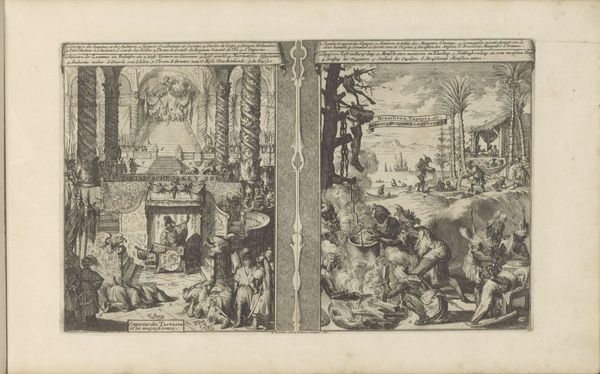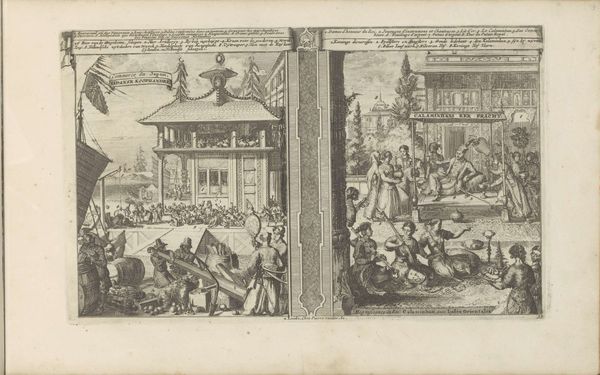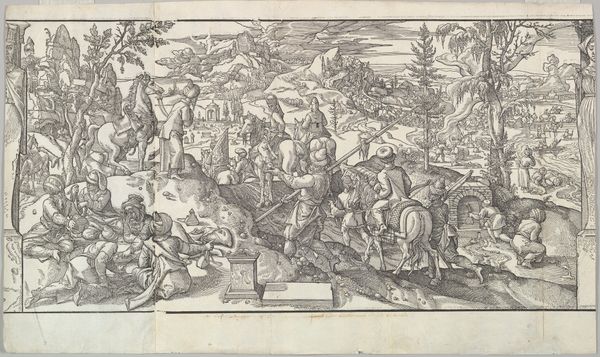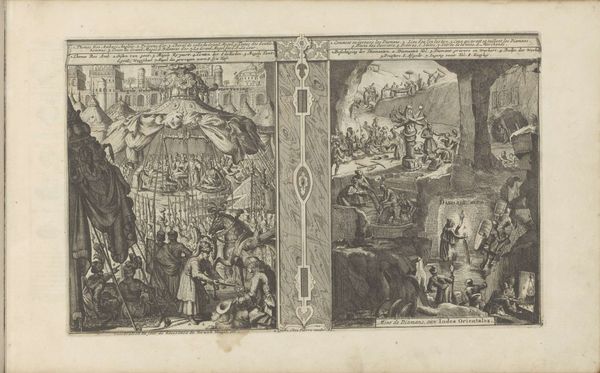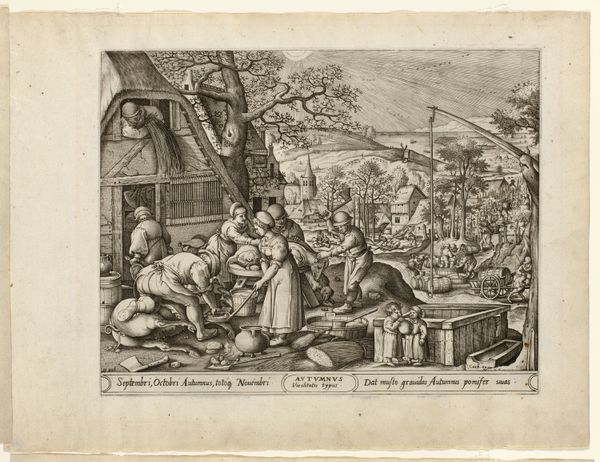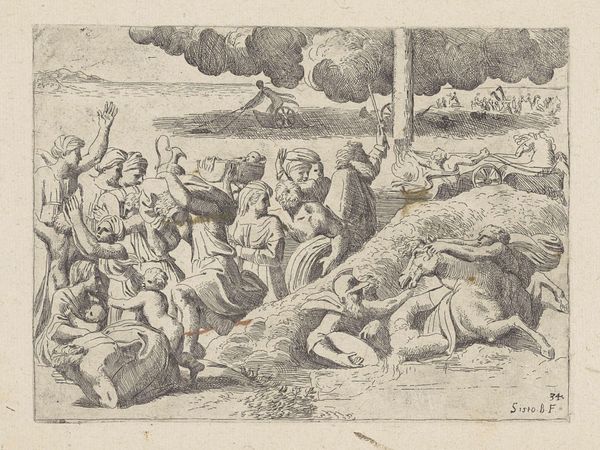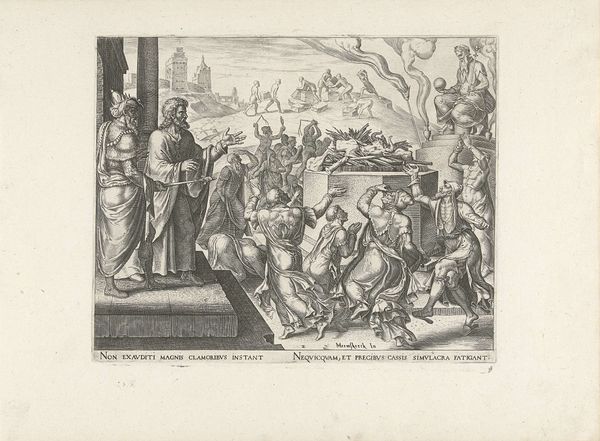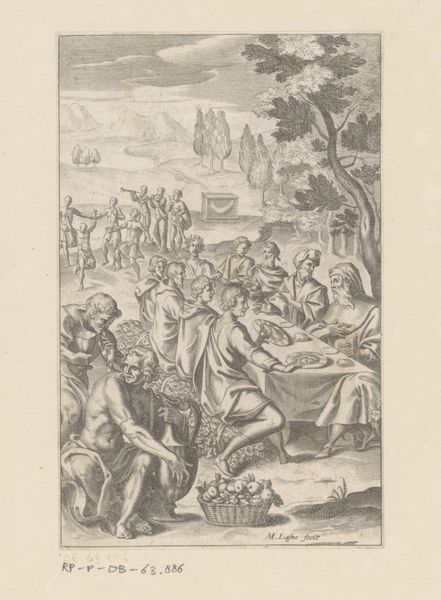
print, etching
#
baroque
# print
#
etching
#
islamic-art
#
history-painting
Dimensions: height 209 mm, width 336 mm
Copyright: Rijks Museum: Open Domain
This print was made by Romeyn de Hooghe, likely in the late 17th or early 18th century. The technique used here is engraving, a process that involves cutting lines into a metal plate, inking it, and then pressing paper against it to transfer the image. Engraving demanded meticulous labor, with each line carefully incised to create variations in tone and texture. Look closely, and you’ll see the incredible level of detail, especially considering the image’s small size. The medium also speaks to the social context of the time. Prints like these were a form of mass media, used to disseminate information and ideas. De Hooghe was known for his political commentary, and his engravings often reflected the complex religious and political tensions of the Dutch Golden Age. The depicted trees, animals and nuts, and the adoration of idols suggests an interest in cultural relativism, typical for the era. Consider, then, how the material and the making of this print contributed to its meaning and impact, blurring the lines between art, craft, and social commentary.
Comments
No comments
Be the first to comment and join the conversation on the ultimate creative platform.
